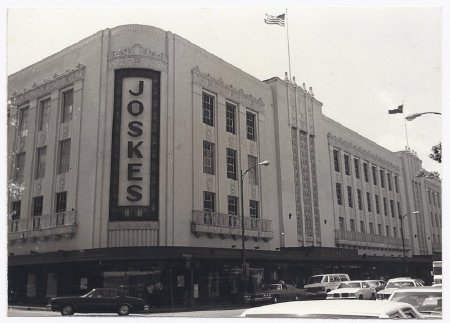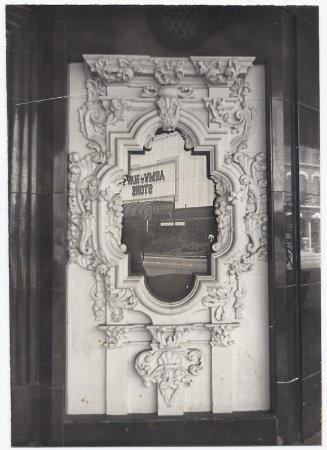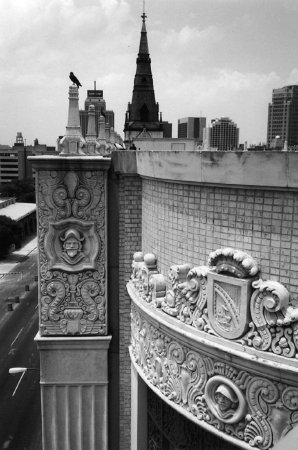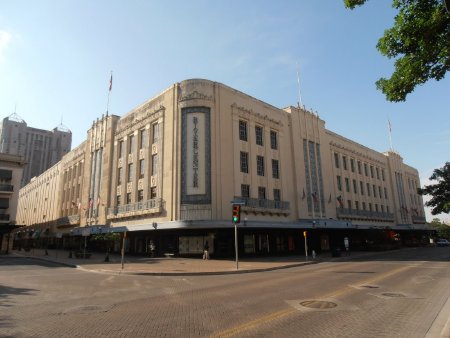History:
Architect Barlett Cocke created a sleek new look for both Joske's new addition and the existing Alamo Street façade, by covering both with a smooth facing of limestone in 1939. His design combined the streamlined massing and form of Art Moderne style with "florid Spanish Renaissance ornament"(San Antonio Architecture). An example of this Spanish influence can be seen in the miniature "rose windows," copied from Mission San Jose, and used for display on the ground floor.
In 1953, Joske's expanded east along Commerce Street, building around three sides St. Joseph's Catholic Church. The original Commerce Street façade remained red brick until 1967, when fiberglass screens were installed over it to give the building a unified appearance prior to HemisFair '68 - the 1968 World's Fair held in San Antonio.
In 1953, Joske's expanded east along Commerce Street, building around three sides St. Joseph's Catholic Church. The original Commerce Street façade remained red brick until 1967, when fiberglass screens were installed over it to give the building a unified appearance prior to HemisFair '68 - the 1968 World's Fair held in San Antonio.
About this Image:
1.) Looking southeast towards the corner of Blum and Alamo streets. The lacy metal balcony railings, grillwork around the sign, and elaborate carving above the windows exemplify the Spanish style.
2.) Close-up of a Rose Window on the Joske's Department Store.
3.) Spanish baroque style detailing, including a coat of arms and jaunty conquistador heads, grace the 1953 addition, looking west towards St. Joseph's Church and Commerce St.
4.) In 1987, Joske's closed for remodeling. The Dillard's department store chain purchased the store, which reopened as part of the new Rivercenter Mall in 1988.
2.) Close-up of a Rose Window on the Joske's Department Store.
3.) Spanish baroque style detailing, including a coat of arms and jaunty conquistador heads, grace the 1953 addition, looking west towards St. Joseph's Church and Commerce St.
4.) In 1987, Joske's closed for remodeling. The Dillard's department store chain purchased the store, which reopened as part of the new Rivercenter Mall in 1988.
To Learn More:
Credit:
Courtesy of San Antonio Conservation Society Foundation




